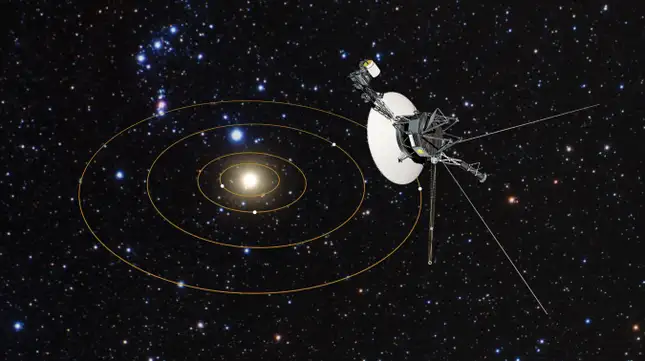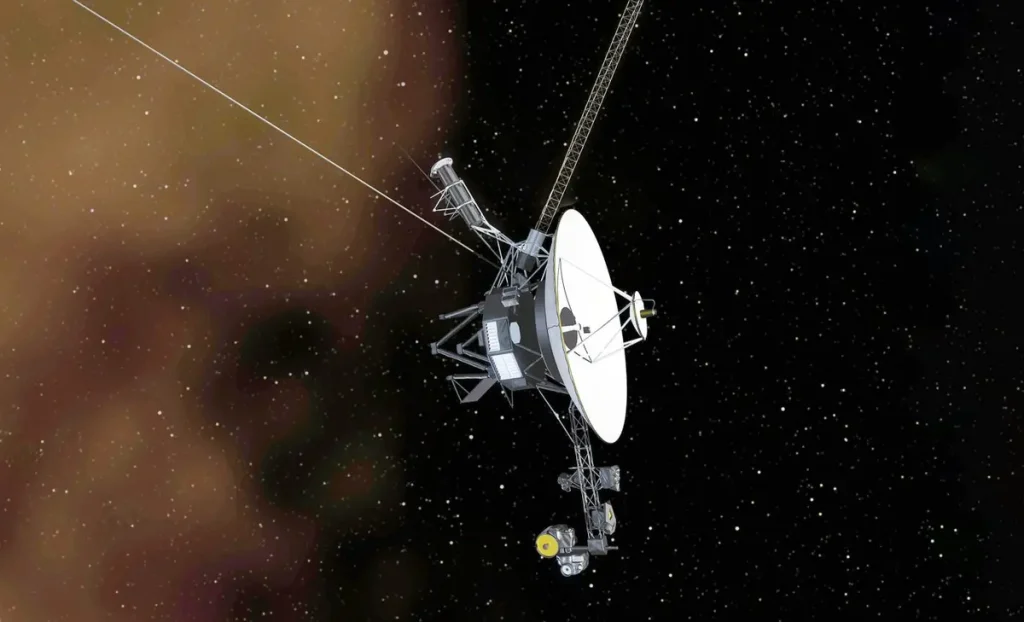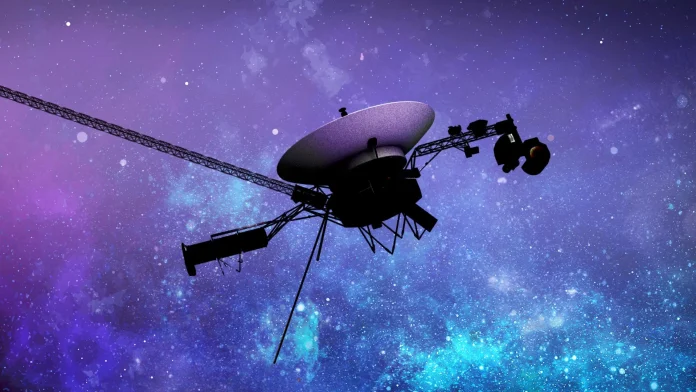Voyager 1: NASA’s Historic Spacecraft Resumes Contact After Communications Blackout.
The Voyager 1 spacecraft, an iconic relic of human exploration, has re-established communication with NASA following a recent technical issue that left the probe silent for several days. Launched in September 1977, Voyager 1 is now 47 years old and operates in the far reaches of interstellar space, approximately 15 billion miles (24 billion kilometres) from Earth. This historic mission is not only the furthest spacecraft from our planet but also continues to yield invaluable scientific data, marking significant milestones in humanity’s quest to explore the cosmos.
After a concerning blackout, Voyager 1 is now utilizing an alternative radio transmitter that has been dormant since 1981. This unexpected turn of events comes as engineers at NASA’s Jet Propulsion Laboratory (JPL) grapple with a series of complications that have arisen due to the spacecraft’s advanced age and the harsh conditions of space. With an aging spacecraft like Voyager 1, the mission team is frequently faced with challenges requiring innovative solutions to ensure continued operation.
Communication with Voyager 1 occurs through NASA’s Deep Space Network (DSN), a series of large radio antennas located around the world, which allows for two-way communication with Voyager and its twin, Voyager 2. Each command sent from mission control takes approximately 23 hours to reach Voyager 1, and the same duration applies to any responses from the spacecraft.

On October 16, a command was sent to activate one of Voyager 1’s heaters, intended to warm components that have suffered radiation damage over the decades. However, a glitch triggered the spacecraft’s autonomous fault protection system, which is designed to conserve power by shutting down non-essential systems if power consumption exceeds certain thresholds. This resulted in the mission team losing contact with the probe on October 18, when they could no longer detect its response signal.
After careful analysis, engineers discovered that the fault protection system had potentially triggered multiple times, leading to a reduced data transmission rate. This had the effect of changing the nature of the signal Voyager 1 was sending back to Earth. Fortunately, the team was able to locate the probe’s faint response signal later that same day, but by October 19, communication was cut off entirely.
The recent challenges faced by Voyager 1 are emblematic of the spacecraft’s remarkable journey through space and time. Its team is known for their ingenuity in overcoming technical obstacles, and this situation is no exception. After the X-band transmitter, which has been the primary method of communication for decades, was compromised, engineers turned to the S-band transmitter, which operates on a different frequency. Though this transmitter has not been used since 1981 due to its weaker signal, it became essential for maintaining contact with the spacecraft.
The DSN engineers successfully detected the S-band signal, providing a lifeline for the mission team. However, this is not a sustainable solution; as Waggoner explained, “The S-band signal is too weak to use long-term.” While the S-band transmitter allows for basic commands to be sent and ensures that Voyager 1 remains oriented toward Earth, it does not provide sufficient telemetry data to monitor the spacecraft’s health or relay scientific observations.

Moving forward, the Voyager 1 team remains cautious. Engineers are prioritizing understanding the root cause of the fault protection triggers before reactivating the X-band transmitter, which could take weeks. The possibility of risks associated with turning the transmitter back on necessitates thorough analysis. “So far, the team has not been able to use it to get telemetry, let alone science data,” Waggoner noted.
In the meantime, the Voyager team is relying on the S-band signal to perform basic checks, which is crucial as they prepare for potential next steps. They aim to gain insights from the spacecraft’s systems that could clarify the circumstances surrounding the communication blackout. If they can restore the X-band transmitter, it would allow for more robust communication and the potential for scientific data transmission, an essential aspect of Voyager’s ongoing mission.
Voyager 1’s continued operation and communication, despite its advanced age and technical hurdles, serve as a testament to human ingenuity and the enduring spirit of exploration. The spacecraft has traveled far beyond the heliosphere, the protective bubble surrounding our solar system, and into the uncharted territories of interstellar space. It has provided groundbreaking insights into the outer planets and the characteristics of the heliopause, the boundary where the solar wind from the sun slows down and interacts with the interstellar medium.
Throughout its journey, Voyager 1 has sent back stunning images and scientific data that have reshaped our understanding of the solar system. From its breathtaking photographs of Jupiter and Saturn to the iconic “Pale Blue Dot” image of Earth, taken from a distance of about 3.7 billion miles, Voyager 1 has captured the imagination of generations and emphasized our place in the universe.
As engineers and scientists work tirelessly to resolve the latest issues with Voyager 1, they are reminded of the importance of this mission. Voyager 1 is not only a scientific instrument but also a cultural artifact, representing humanity’s desire to explore and understand the cosmos. Its data continues to enhance our knowledge of planetary science, astrophysics, and even the very nature of space and time.
The challenges faced by Voyager 1 reflect broader themes in space exploration: the need for adaptability, resilience, and creativity in the face of the unknown. Every decision made by the Voyager team carries the weight of decades of research, investment, and hope. As they navigate the complexities of communication with the aging spacecraft, they remain committed to maximizing the mission’s scientific output.

In conclusion, while Voyager 1 may be facing challenges, its legacy continues to unfold. The mission’s team remains dedicated to ensuring that this pioneering spacecraft can continue to share its remarkable journey through the cosmos. The ingenuity and resilience displayed by NASA’s Voyager team remind us that, even in the most distant reaches of space, the spirit of exploration remains alive and well, reflecting the unyielding curiosity of humankind. As we look to the stars, Voyager 1 continues to be a beacon of hope and inspiration in our quest to explore the unknown frontiers of the universe.




